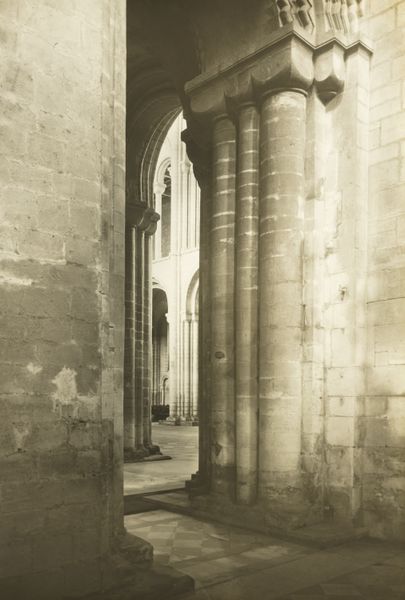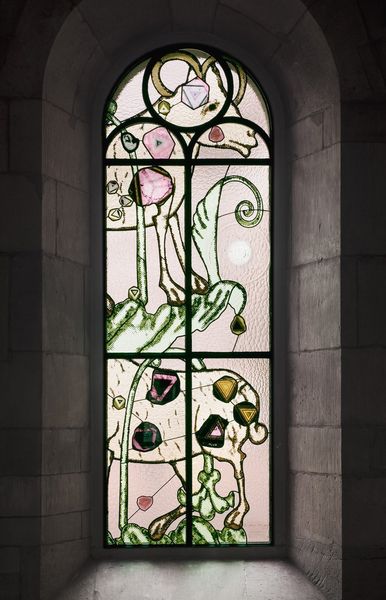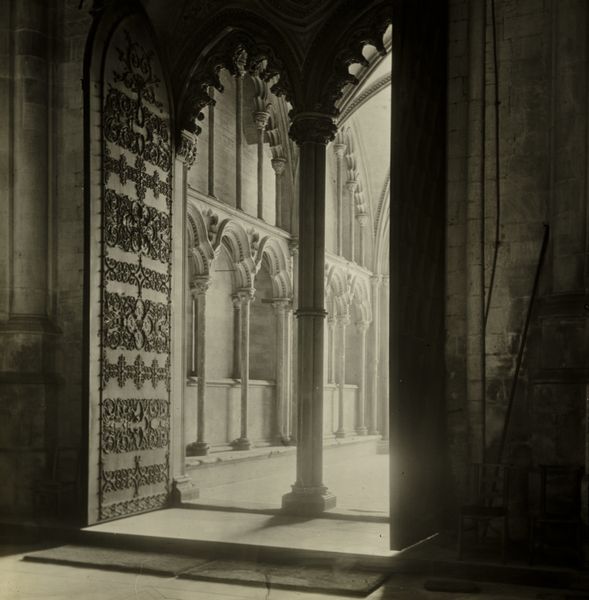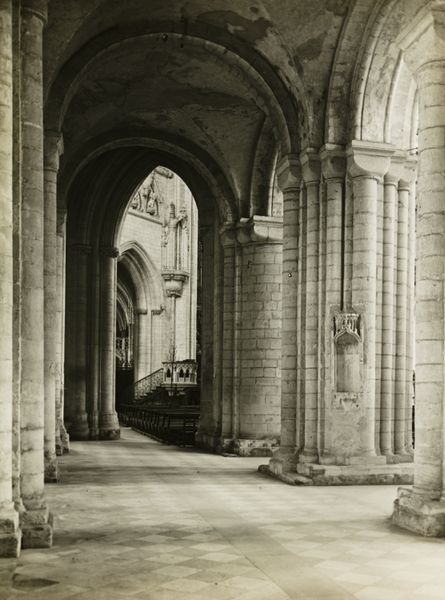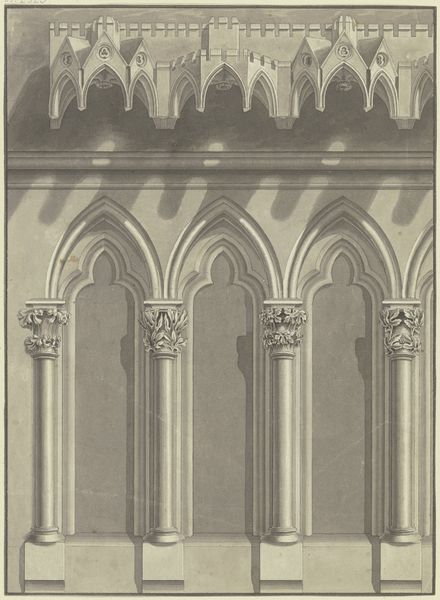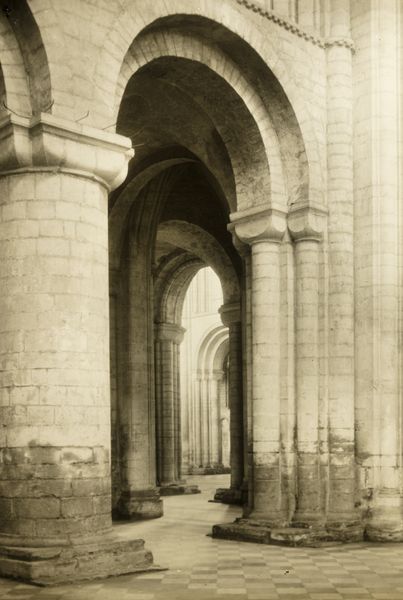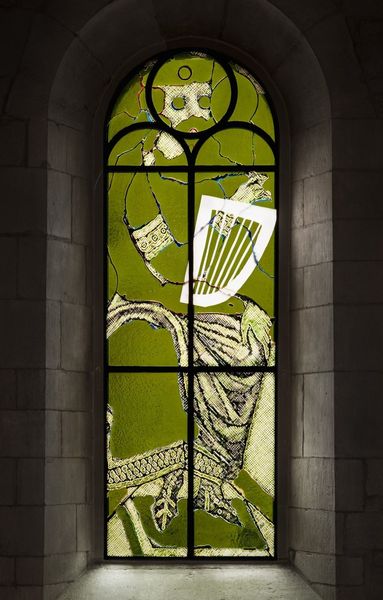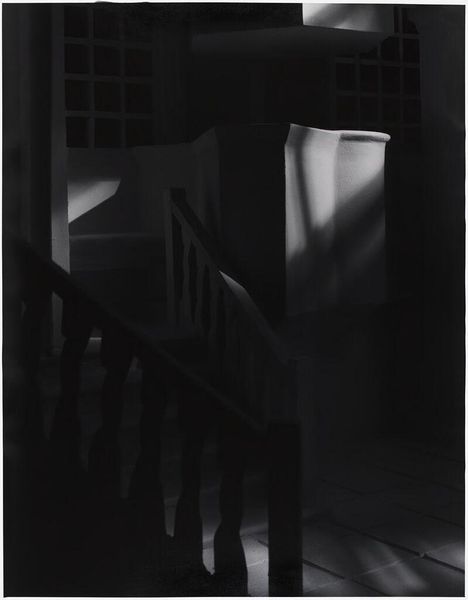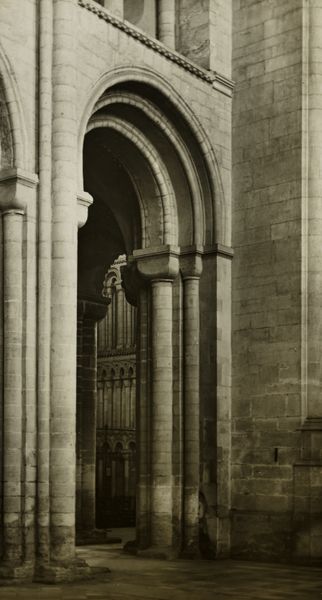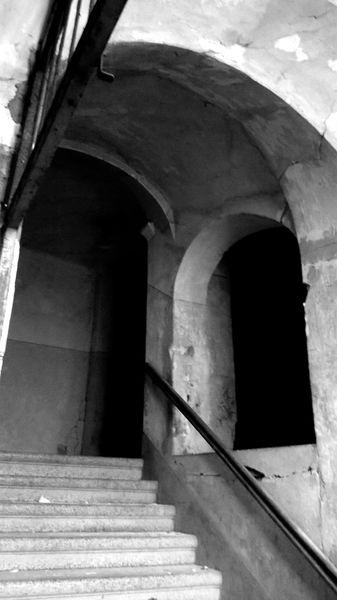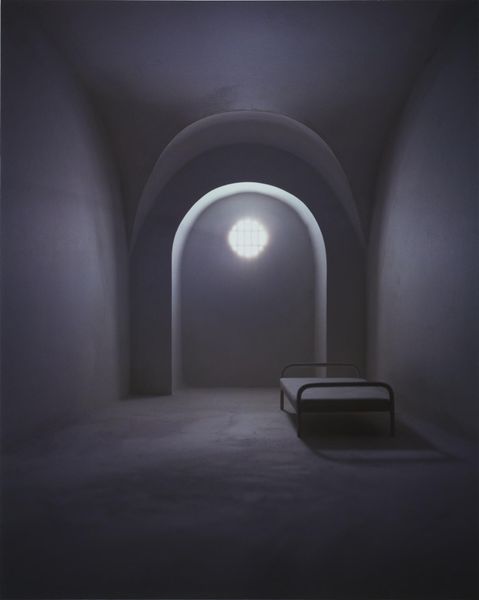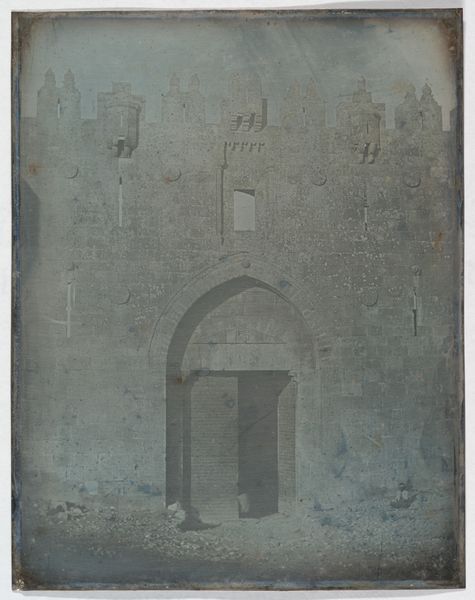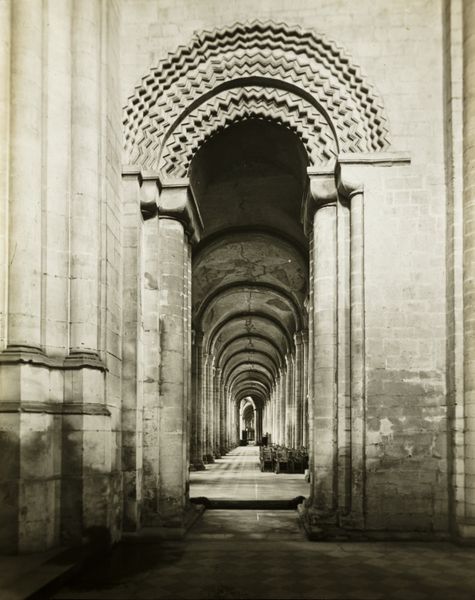
photography
#
portrait
#
stone
#
sculpture
#
landscape
#
form
#
photography
#
geometric
#
capitalist-realism
#
line
#
monochrome
Copyright: Sigmar Polke,Fair Use
I can't be certain when Sigmar Polke made this enigmatic piece, "Menschensohn," or even be sure of the materials, but its play with light and shadow speaks volumes. Polke’s work often feels like an alchemical experiment, a testing of boundaries between the visible and the unseen. Here, the stark contrast between the silhouettes and the radiant background creates a visual push-and-pull. Are we seeing faces in profile, gazing at each other across a void? Or are we looking at a series of vases, their forms emerging from the darkness? This ambiguity is so Polke! It’s a reminder that perception is never fixed, that what we see depends on how we choose to look. The way the image repeats and shifts, it reminds me a little of Warhol's serial imagery, but with a deeper sense of unease. Like Jasper Johns, Polke invites us to question the very nature of representation. Both artists understood that art isn't about answers; it's about the questions we ask.
Comments
No comments
Be the first to comment and join the conversation on the ultimate creative platform.
